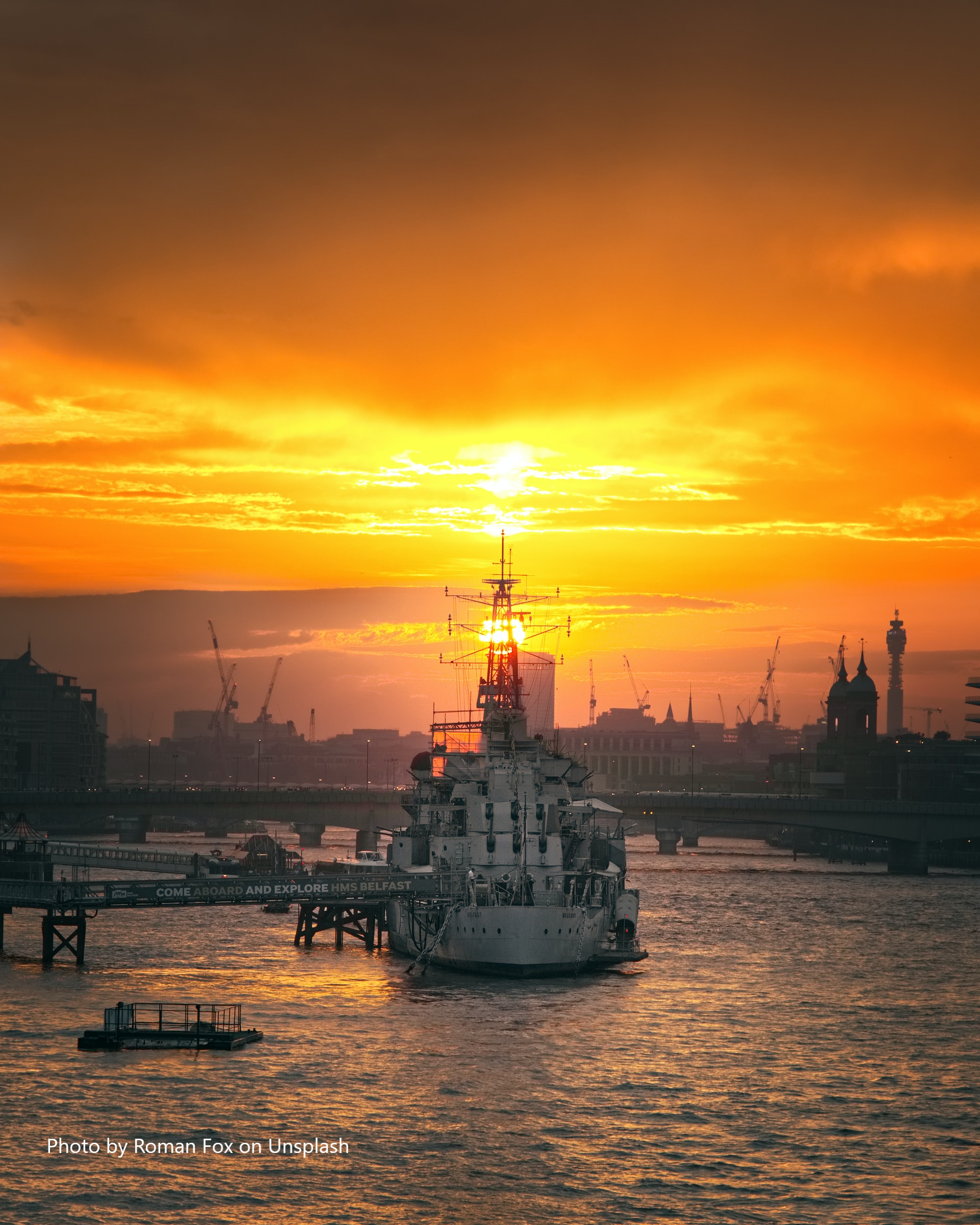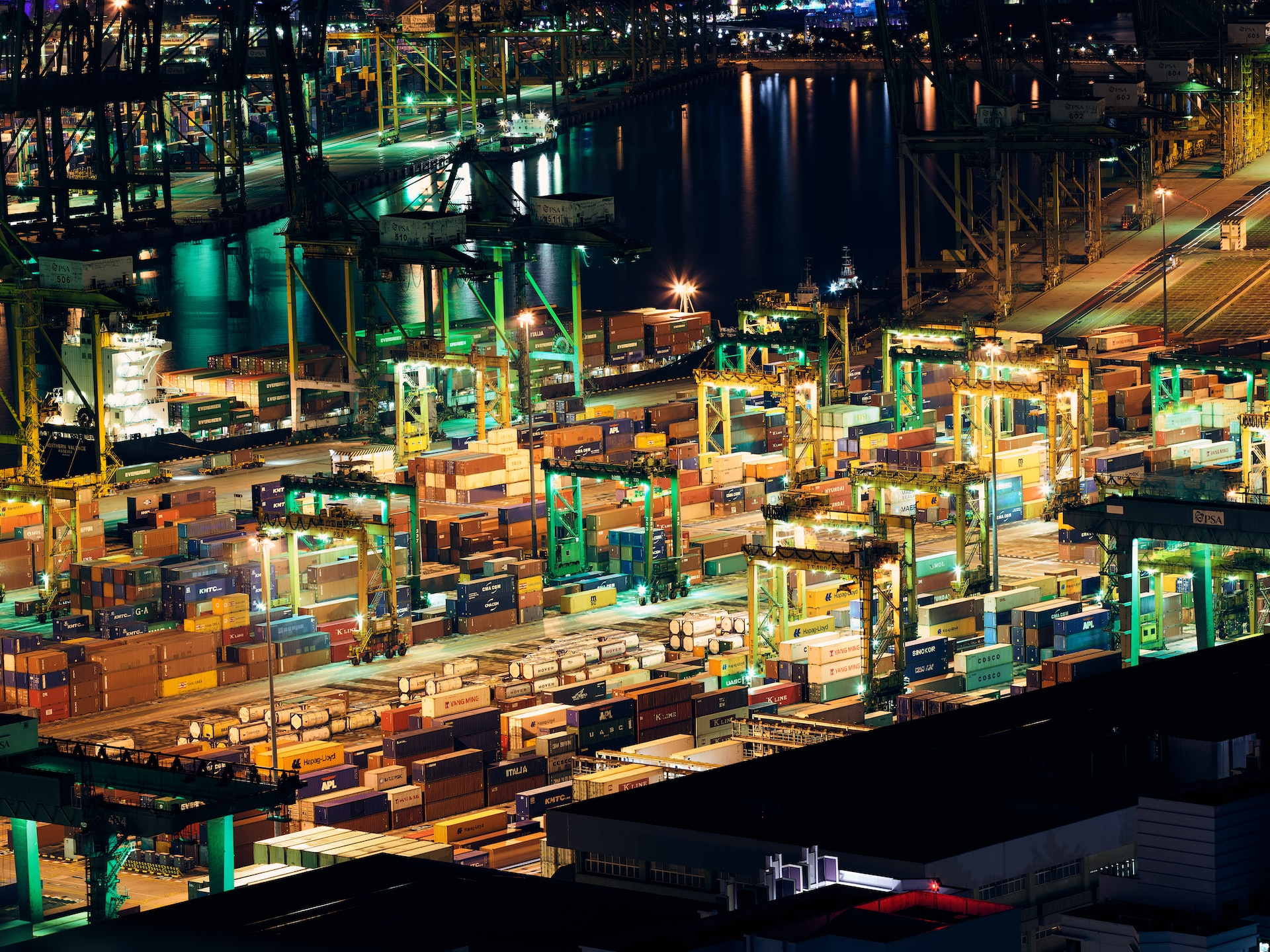
In Port vs. Maneuvering vs. At Sea
What are the 3 Phases of Operation for Ships?
Are ships always on the go all the time? Well yes, but realistically they still have to maneuver in and out of ports, rivers…etc. Therefore, there are different operational statuses or phases, and a ship is always falls into one of these categories. The three operational phases of a ship are In Port, in Maneuvering, or At Sea. These are the official terms used in a ship’s logs to document a timeline for the ship’s activities. This article will give a general overview of these three phases from an engineering perspective, and also describe what each one means with reference to the status of the engineering plant during each phase. For more on ship types, see our article on what are the different types of ships.

In Port, Maneuvering, and At Sea
In Port
When a ship’s official status is "In Port", aside from the obvious fact that the ship is physically in port, it also gives a general description of the status of the ship’s engineering systems. When a ship is under "In Port" status, the ship is tied up to the pier and the main propulsion plant is shut down along with some of the systems associated with the main propulsion system. In Port status is generally when the plant is at its lowest operational status with regards to it being ready to get the ship underway.
Engineering
If there is an Engineering Watch, the watch may shift from 4-hour watches to 8-hour watches or be eliminated altogether with the watch-standers becoming dayworkers until the ship is getting ready to get underway again. This all varies from ship to ship but can be used as a good rule-of-thumb.
If a ship is In Port, that also means that it cannot do things that it would typically be permitted to do when out on the open ocean. For example, did you know that ship’s make their own water? Or treat and dispose of their own sewage? If you weren’t aware of that, you are now! With that being said, ships are permitted by international law to only do these tasks when in international waters (12+ nautical miles away from the nearest coast) and not in protected waters. For more on ship maintenance, see our article on ship maintenance periods.
Needless to say, the tasks described in the previous paragraph can’t be completed pier-side, so how is this accomplished? Simple, hoses. ‘Shore Services’ are the sewage, water, and oily waste disposal hoses are hooked up to connections on the pier that allow the ship access to these services. These services are connected and disconnected as needed, when available, as the ship comes in and out of port. With these services connected, the ship can fill up its water tanks, and dispose of its sewage and oily waste as needed.
Maneuvering
Maneuvering is an official term used in the shipping industry to describe when a ship is entering or exiting a port or an area that requires special considerations and extra steps to be taken to ensure that the ship is safely navigated.
What are Pilots?
You most certainly have heard of an Airline Pilot, but ships have Pilots as well. In the shipping industry, Pilots are experienced mariners that are trained specifically in navigating ships through a particular waterway and are required to know every minute detail of their respective waterway. This takes many years of gaining hands on experience and studying to get a Pilot’s license. If I remember correctly, to pass their Pilots test from the Coast Guard, they are required to do something crazy like draw a topographical map of their waterway by hand, from memory, in order to pass the test!
How are Pilots used in the Maritime Industry?
Pilots are passed control of navigation of the ship by the Ship’s Captain once the Pilot boards the ship, and navigates the ship until the ship reaches the pier (if entering port) or the open ocean (if leaving port).
For example, the Columbia River is used by ships traveling to Portland, Oregon. It is generally an 8-hour trek from entering the river until you reach Portland. A Pilot is brought out to the ship via a Pilot Boat or Helicopter where he boards the ship as the ship crosses the Columbia River Bar when approaching the river. This Pilot will have vast experience and intimate knowledge of the Columbia River such as tides, currents, topography…etc., and will be able to safely navigate the ship through the full 8-hours.
Maneuvering from an Engineering Perspective
From an Engineering perspective, Maneuvering is generally an all-hands, or at least MOST-hands event. The Chief Engineer is required to be in the Engine Control Room, someone from the deck department as well as a Licensed Engineer are both required to be in the Steering Gear room should the need arise to take manual control of the ship’s steering equipment, and the other licensed engineers are typically roaming around the Engineering Spaces keeping a lookout of any equipment issues.
Equipment Testing
Testing of engineering equipment is required at certain times before a ship enters maneuvering mode. Most ships will have some sort of official form to fill out prior to a Maneuvering evolution that keeps track of each required test, the time it was conducted, and the result of the test was unsatisfactory or satisfactory (SAT/UNSAT).
Some examples of this are that the Emergency Diesel Generator is required to be tested within 12 hours of Maneuvering, Main Propulsion Gear testing, Steering Gear testing and communications equipment testing between the Bridge and the Engine Room are also required to ensure that all communications and vital equipment are operating properly.
When a ship is Maneuvering is when it is at its highest likelihood of something going wrong since there is little margin for error as the ship is typically in a narrow or crowded waterway. Therefore, there are many precautions taken to ensure that everything is in good working order and that the crew is ready to respond to any issues.
At Sea
When a ship is At Sea, that means it is on the open ocean and on its way to a destination (if there is one). As far as the Engineering plant goes, this means that all systems should be up and online as needed for the ship to be underway. For more on ship fuel systems, see our article on ship fuel systems.
On the way out of a port, a ship is declared At Sea shortly after the pilot has been picked up by the Pilot boat or helicopter. When approaching a port, the ship enters Maneuvering from being At Sea shortly after the Pilot boards the ship. As stated above, ship’s at sea can generally resume making water and properly disposing of sewage as needed while underway as long as they’re more than 12 miles offshore.
Recap
In this article we talked about the three phases of operation of a ship, In Port, Maneuvering, and At Sea. Just like most of the other overview articles we have, this is meant to be a 30,000 ft. view of what these three phases are. There is a lot more detail regarding each one, but hopefully the above information is enough for you to have established a baseline of knowledge of what each phase is. For more about the marine engineering career, see our article on what do marine engineers do and for more about maritime careers, see our guide on how to become a merchant mariner.
Share This Article
Related Articles
Continue reading with these related articles

Post
Ship Crew Structure: Understanding Maritime Organization
Learn about the hierarchical structure of ship crews, from deck officers to engine room personnel and their respective responsibilities.

Post
How Do Ships Work? Understanding Maritime Vessel Operations
A comprehensive guide to ship operations, covering propulsion systems, navigation, and the various components that make maritime vessels function.

Post
Ships at Anchor: Understanding Anchorage Operations
Learn about the procedures and considerations when ships are at anchor, from safety protocols to maintenance activities.

TechnologyPost
3D Printing in Maritime: Additive Manufacturing for Ship Parts and Repairs
Discover how 3D printing and additive manufacturing are revolutionizing maritime operations. Learn about ship part production, maritime 3D printing, and on-demand manufacturing at sea.
© 2025 The Salty Mariner. All rights reserved.
